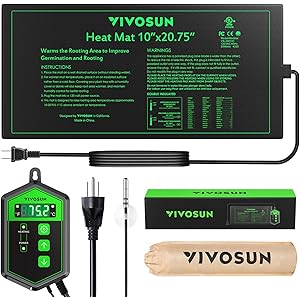As a passionate gardener, I often find myself exploring the rich tapestry of gardening opportunities across the United States. One zone that frequently piques my interest is Zone 8. If you’re wondering where Zone 8 is located and what it means for your gardening endeavors, you’re in the right place. In this article, I will delve into the specifics of Zone 8, its climate, and how you can maximize your garden’s potential within this zone. Together, we’ll uncover the secrets of gardening success in Zone 8!
Understanding USDA Hardiness Zones
Before diving into the specifics of Zone 8, it’s crucial to understand what USDA Hardiness Zones are. The USDA Plant Hardiness Zone Map divides North America into 13 zones based on the average annual minimum winter temperature. This classification helps gardeners determine which plants are most likely to thrive in their local climates.
What is Zone 8?
Zone 8 is defined as areas where the average annual minimum temperature ranges from 10°F to 20°F (-12°C to -6°C). This means that if you live in Zone 8, you can expect milder winters compared to other zones. The growing season is relatively long, which opens up a wide array of gardening possibilities.
Where is Zone 8 Located?
Zone 8 encompasses a diverse range of locations across the United States. Here are some of the most notable areas:
- Parts of the Pacific Northwest, including western Oregon and Washington
- Much of California, especially the coastal regions
- Southern states like Texas, Louisiana, and Arkansas
- Parts of the Southeast, including Alabama and Georgia
- Some areas in the Mid-Atlantic, such as Virginia and Maryland
These regions benefit from the moderate climate of Zone 8, making them ideal for a variety of plants, from ornamental flowers to fruit-bearing trees.
Climate Characteristics of Zone 8
The climate in Zone 8 is characterized by:
- Warm summers with average high temperatures reaching the 80s and 90s °F (27-37°C)
- Mild winters with occasional frost
- Moderate rainfall, typically between 30-50 inches annually
This climate allows for a diverse range of gardening practices, including growing both perennial and annual plants. The long growing season means that gardeners can enjoy multiple harvests and continuous blooms throughout the year.
Best Plants for Zone 8
Choosing the right plants for your Zone 8 garden can significantly enhance your gardening experience. Here are some excellent plant options:
Flowers
- Daylilies (Hemerocallis)
- Black-eyed Susans (Rudbeckia)
- Coreopsis
- Lavender (Lavandula)
- Roses
Vegetables
- Tomatoes
- Peppers
- Eggplants
- Squash
- Cucumbers
Fruits
- Blueberries
- Strawberries
- Figs
- Citrus fruits
- Pomegranates
These plants not only thrive in Zone 8 but also add beauty and productivity to your garden.
Soil Considerations for Zone 8 Gardening
Soil quality plays a crucial role in the success of any garden. In Zone 8, the soil can vary widely, so it’s essential to test your soil to determine its pH and nutrient levels. Here are some general tips for improving your soil:
- Incorporate organic matter, such as compost or well-rotted manure, to enrich the soil.
- Mulch around plants to retain moisture and suppress weeds.
- Consider raised beds if you have heavy clay or sandy soil to improve drainage and control soil quality.
Taking these steps will create a thriving environment for your plants, enabling them to reach their full potential.
Watering Practices in Zone 8
Watering is vital for plant health, especially in the warmer months. Here are some effective watering practices for Zone 8:
- Water deeply and less frequently to encourage deep root growth.
- Water in the early morning or late afternoon to reduce evaporation.
- Use drip irrigation systems to deliver water directly to the roots.
Implementing these techniques will ensure that your plants receive the moisture they need without waste.
Pest and Disease Management
Gardening in Zone 8 also comes with its own set of challenges, such as pests and diseases. Being proactive can save you time and heartache later. Here are some strategies:
- Regularly inspect your plants for signs of pests or diseases.
- Use companion planting to deter pests and promote healthy growth.
- Consider organic pesticides as a last resort, and always follow label instructions.
By staying vigilant and informed, you can keep your garden healthy and productive.
Climate Change and Zone 8 Gardening
As climate change continues to impact gardening zones across the country, it’s essential to stay informed about how these changes might affect your garden. Here are some considerations:
- Be prepared for shifts in temperature and precipitation patterns.
- Research climate-resilient plants that can withstand changing conditions.
- Stay engaged with local gardening communities to share experiences and strategies.
By adapting your gardening practices, you can continue to cultivate a thriving garden in Zone 8, regardless of climatic challenges.
Community and Resources
One of the best parts of gardening is the sense of community it fosters. Here are some ways to connect with fellow gardeners in Zone 8:
- Join local gardening clubs or online forums to share tips and experiences.
- Attend gardening workshops and community events to learn from experts.
- Follow gardening blogs and social media accounts focused on Zone 8 gardening.
Engaging with others can provide invaluable insights and make your gardening journey even more enjoyable.
Conclusion: Unlocking Your Garden’s Potential in Zone 8
In summary, understanding where Zone 8 is located and what it entails is crucial for any gardener looking to unlock their garden’s potential. With its favorable climate, diverse plant options, and supportive gardening community, Zone 8 offers unique opportunities for growth and creativity. By implementing the tips and strategies outlined in this article, you can cultivate a thriving garden that not only beautifies your space but also nourishes your soul.
Join the conversation about Zone 8 gardening! Share your experiences, tips, and favorite plants in the comments below. Don’t forget to sign up for our newsletter for more gardening insights, and share this article with your friends and on social media. Happy gardening!
FAQ
What plants grow best in Zone 8?
Zone 8 is home to a variety of plants, including daylilies, tomatoes, blueberries, and citrus fruits. The mild climate supports a diverse range of flora, making it a gardener’s paradise.
Can I grow tropical plants in Zone 8?
Yes! Many tropical plants can thrive in Zone 8, especially if you provide them with some winter protection, such as bringing potted plants indoors or using frost covers.
How can I improve my soil for gardening in Zone 8?
Incorporating organic matter, testing the soil for pH and nutrients, and using mulching techniques can significantly improve soil quality and promote healthy plant growth.
What are some common pests in Zone 8?
Common pests in Zone 8 include aphids, spider mites, and caterpillars. Regular monitoring and the use of companion planting can help manage these pests effectively.
VIVOSUN 10"x 20.75" Seedling Heat Mat and Digital Thermostat Combo Set, UL & MET-Certified Warm Hydroponic Heating Pad for Germination, Indoor Gardening, Greenhouse
$29.44 (as of 08/12/2025 04:02 GMT -03:00 - More infoProduct prices and availability are accurate as of the date/time indicated and are subject to change. Any price and availability information displayed on [relevant Amazon Site(s), as applicable] at the time of purchase will apply to the purchase of this product.)
Sign up for our newsletter and stay up to date with exclusive news
that can transform your routine!




